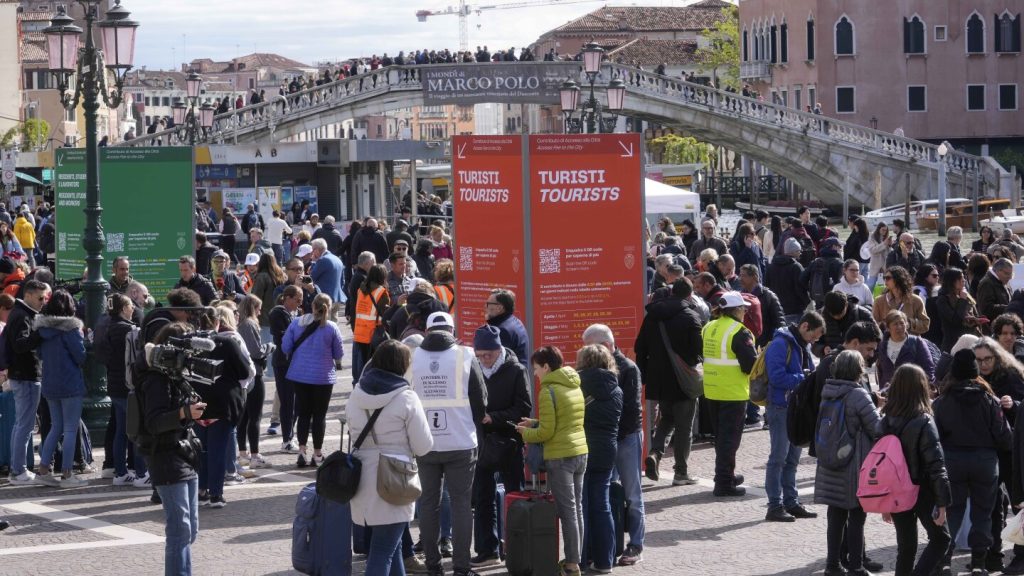Venice, Italy, has implemented a pilot program to charge day-trippers a 5-euro entry fee in an effort to manage overtourism and make the city more livable for its residents. The program aims to discourage visitors from arriving on peak days and reduce the strain on the city’s infrastructure. The initiative was met with mixed reactions from residents, with some believing that only an increase in the resident population can restore balance to the city.
Despite protests from some residents, the day-tripper fee was implemented at the main train station in Venice. Tourists were required to download a QR code and pay the fee upon arrival between 8:30 a.m. and 4 p.m. Workers in yellow vests carried out random checks to ensure compliance, with fines ranging from 50 to 300 euros for transgressors. The city hopes that the pilot program will provide more accurate data on visitor numbers to better manage the influx of tourists.
Venice has long struggled with mass tourism, with officials noting that the city is strained when day-tripper numbers reach 30,000 to 40,000. The program is part of a larger effort to address issues related to overtourism, including limiting short-term rentals to make more housing available for residents. The city has faced challenges as the number of tourist beds has exceeded the number of official residents, indicating a need for sustainable solutions to protect Venice’s unique heritage.
While the day-tripper fee was deemed a success by the mayor on its launch day, with more visitors paying than expected, some residents and activists remain critical of the measure. They argue that the focus should be on increasing the resident population and providing essential services rather than imposing fees on visitors. One activist expressed concern that the fee could further incentivize short-term rentals and displace long-time residents, emphasizing the importance of preserving Venice’s local community.
The initiative has garnered interest from other cities facing similar challenges with mass tourism, both in Italy and abroad. However, some long-time residents, like Marina Rodino, question the effectiveness of the fee as a solution. Rodino believes that the key to addressing Venice’s issues lies in ensuring that homes are inhabited by families and local businesses can thrive. She distributed mock EU passports for “Venice, Open City” to challenge the legality of the new system and emphasize the right of citizens to freely move within their own country.
As Venice continues to grapple with the impact of overtourism, the implementation of the day-tripper fee represents a step towards managing visitor numbers and preserving the city’s unique character. The program will be closely monitored to assess its effectiveness in balancing the needs of residents and tourists while maintaining Venice’s status as a global cultural icon. Residents and officials alike will be watching closely to determine the long-term impact of the fee on the city’s sustainability and livability.


